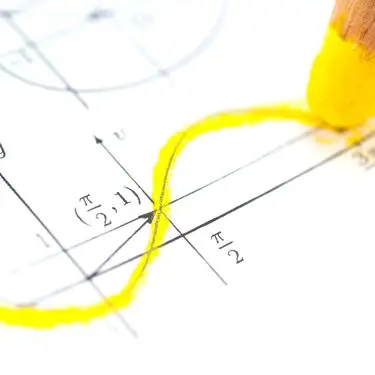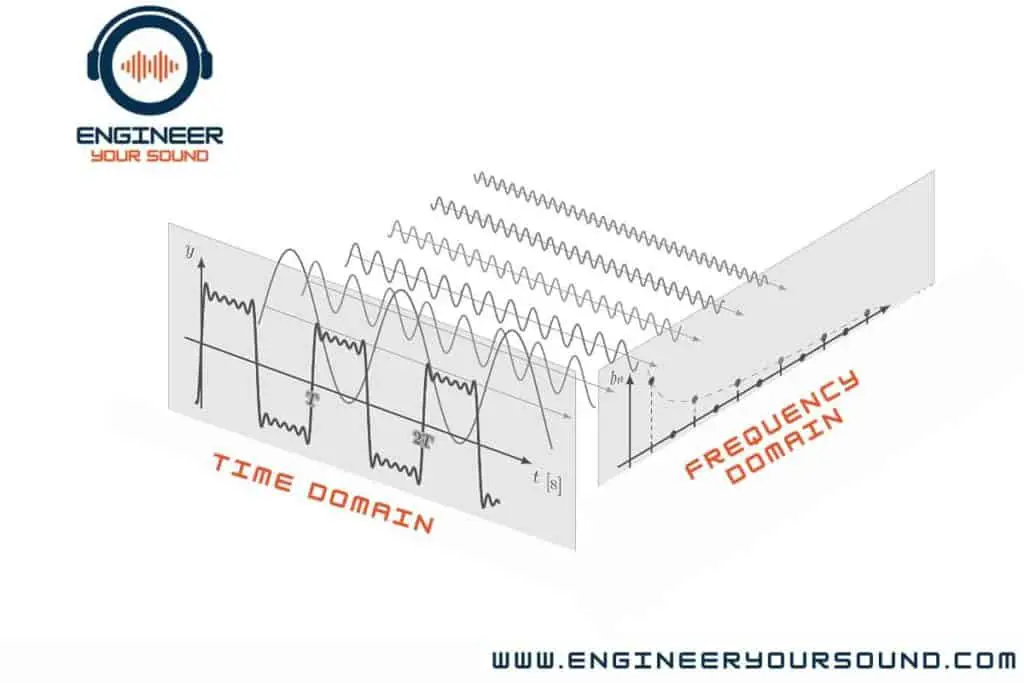The Fourier series is a powerful mathematical tool for representing or analysing periodic signals.
At first, the Fourier series can be difficult to comprehend as there is significant mathematics involved, but when you use the Fourier series in real-world applications, its function, importance and power become quickly clear.
Typically, some real-world applications of the Fourier series include applications such as signal filtering, noise removal, identifying the resonant frequency of a structure, compression of audio signals and speech recognition, to name but a few.
In reality, we use the Fourier series in a vast range of industries, from electrical engineering, acoustics, optical engineering, image processing, quantum mechanics and all sorts of signal processing.
Generally, the Fourier series is explained in complex mathematical terms, (for example, this excellent book on Amazon does a good job) however, in this article, I plan to break it down into simple understandable terms and will direct you to excellent sources of mathematical theory if you would like to read further.
I will cover:
- What is the Fourier series in simple terms?
- What are the applications of the Fourier series?

What Is The Fourier Series In Simple Terms?
In the simplest terms, the Fourier series can express a periodic signal as a combination of sinusoids (sine waves).
Below is a classic image that shows exactly how the Fourier series works; we have a resultant signal that comprises a combination of sine waves.
The resultant signal is a periodic wave that does not resemble a sine wave, however, it is made from a combination of sine waves.

From the above image, we can see that it is possible to express a periodic wave as a combination of sinusoids (sine waves), which is exactly what the Fourier series can do. [source]
From this, we can deduce that as long as we know the response of a system to sinusoids, we can predict how the system will respond to any periodic signal.
The Fourier series can represent a signal in both the time domain and the frequency domain. In the time domain, the signal is represented as a sum of sinusoidal functions. In the frequency domain, the signal is represented as a sum of complex exponentials.
The Fourier transform is a tool that can convert a signal from one domain to the other. I have covered the Fourier transform in greater depth in this article, “What Is The Fourier Transform? (Why we need it in simple terms)“
If you want to learn the fundamentals of the Fourier Series through video course, I recommend checking out Udemy as a really affordable and fantastic resource. Here is a link to an excellent Signals & Systems course.

Learn Signals & Systems
Learn the fundamental characteristics of signals and systems, Fourier Transform and Z-Transform from basic to advance.
What Are The Applications Of Fourier Series?
Some potential applications of the Fourier series that were mentioned include signal filtering, noise removal, identifying the resonant frequency of a structure, compression of audio signals, and speech recognition.
These are just some examples, and in reality, they used the Fourier series in a vast range of industries for a tremendous variety of purposes. Some other examples include studying electrical signals, acoustics, optical engineering, image processing, quantum mechanics and signal processing.
But what are some real-world examples of the Fourier series in very simple terms?
As mentioned, the Fourier Series is used to represent the response of a system to a periodic input, and this response often depends directly on the frequency content of the input.
Here are some real-world, practical applications of the Fourier series. (As a side note, if you want to a very basic introduction to DSP, this book called “Digital Signal Processing for Complete Idiots (Electrical Engineering for Complete Idiots)”, is a great starting point. View it here on Amazon)
1. Selective Filtering
The Fourier series can be used to design filters that remove specific frequency components from a signal while preserving others. This is known as selective filtering.
For example, we often design audio filters using the Fourier series to remove unwanted noise from an audio signal while preserving the desired frequencies.
2. Noise Filtering
The Fourier series can be used to remove unwanted noise from a signal. This is known as noise reduction or noise cancellation.
For example, active noise cancellation headphones use the Fourier series to remove unwanted background noise from an audio signal.
3. Identifying Resonant Frequencies
The Fourier series can be used. to identify the resonant frequency of a structure. This is known as resonance analysis.
For example, the Fourier series can be used to analyse the resonance behaviour of a building or bridge.
By Identifying the resonant frequencies of a structure, engineers can design the structure to avoid these frequencies or dampen them to prevent damage. Check out my article on modal analysis to learn more about how structures vibrate.
4. Compression Of Signals
The Fourier series can be used to compress signals by removing redundant information. For example, image compression algorithms often use the Fourier transform to remove high-frequency components that are not perceptible to human vision. This reduces the file size of the image without significantly degrading its quality.
The Fourier series can be used to compress audio signals. This is known as audio compression. For example, the mp3 audio format uses the Fourier series to compress audio files.

Learn Signals & Systems
Learn the fundamental characteristics of signals and systems, Fourier Transform and Z-Transform from basic to advance.
5. Speech Recognition
The Fourier series can be used for speech recognition. For example, the Fourier series can be used to process and recognise speech patterns.
6. Data Transmission
The Fourier series can be used to encode and decode signals for transmission over a channel. This is known as data modulation.
For example, the Fourier series can be used to modulate an audio signal for transmission over a telephone line.
Final Thoughts
The Fourier series has a vast number of applications in an enormous variety of industries. Some examples include signal filtering, noise removal, identifying resonant frequencies, compression of audio signals, and speech recognition.
The Fourier series is also used for data transmission and modulation. These are just some of the many real-world applications of the Fourier series.
In this article, I have touched only briefly on the Fourier series to give a fundamental overview of its importance. Of course, behind the Fourier series is heavy mathematics.
As already mentioned, a great starting point to get a grip on the Fourier series without too much mathematics is the book, Digital Signal Processing for Complete Idiots (Electrical Engineering for Complete Idiots)
To dive deeper into the Fourier series mathematics, I recommend you try out a video course on Udemy or Coursera, to appreciate how a Fourier series is constructed mathematically.

Learn Signals & Systems
Learn the fundamental characteristics of signals and systems, Fourier Transform and Z-Transform from basic to advance.
